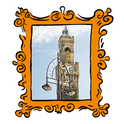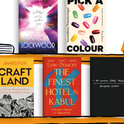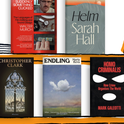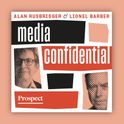Is a River Alive?
by Robert Macfarlane (Hamish Hamilton, £25)
Picture a dead river. This is what Robert Macfarlane asks us to do, to help conceive an answer to the question, “Is a river alive?”
The poet and nature writer travels to the Los Cedros cloud forest in Ecuador, then to Chennai in India, to Canada’s Quebec: places where rivers are threatened by gold mining, poisoned through pollution, or drowned by damming. And in England, says Macfarlane, every river is either “dying through inattention” or being “killed by design”.
There is hope. In courtrooms across the world, rivers are being legally declared as protected, living entities. The idea sounds radical—but, as Uruguayan writer Eduardo Galeano points out, we seem to readily accept that corporations have rights comparable to those of humans, “as if companies could breathe!” Why not do the same for nature?
Macfarlane gives our waters personhood: he writes of streams “who” flow (not “which”). A river curls “umbilically” into a lake, has a pulse, a “belly”, a “gizzard”, resembles a neural network, speaks with “jaws” and a “tongue”. And he asks us to reimagine ourselves as “water-bodies”, reconstituting our relationship with the natural world around us.
Activists have held wakes for loughs and glaciers (some complete with coffins, speeches and mourners dressed in black, laying wreaths). But this book is also about human death and grief. Many of Macfarlane’s travel companions have faced their own losses, but he brings insight, erudition and even humour to the deft character portraits he paints of them.
In fluid prose that rivals his poetic work (the prologue begs to be read aloud), Is a River Alive? captures the wonder of life and its small beings, funghi and moths and paper wasps, that mostly go unnoticed. It’s about the healing, revitalising power of rivers: as humans do what they can to bring nature back from the brink, nature certainly reciprocates.
Imaan Irfan
Extractive Capitalism: How Commodities & Cronyism Drive the Global Economy
by Laleh Khalili (Verso, £12)
For the academic and author Laleh Khalili, the 1953 British- and US-backed coup to depose Mohammad Mossadegh, then prime minister of Iran, was the moment when the essential character of modern capitalism was forged—or perhaps just revealed. Mossadegh’s sin had been to nationalise Iran’s oil, a move that struck an unacceptable blow against the entwined interests of western companies and their governments. Other postcolonial leaders “who dared to threaten Euro-American corporations’ God-given right to their countries’ resources” were similarly deposed and replaced with “more malleable figures who… protected European and US interests.” Thus, colonialism birthed modern capitalism, with the CIA acting as midwife.
One of the core arguments of Khalili’s new book is that the central role of the US military and security state in sustaining capitalism as we know it has never gone away. Khalili picks on former US Army general Stanley McChrystal as the embodiment of “the close links between the US military complex and extractive industries”. McChrystal, like other generals, has enjoyed a lucrative second career as a corporate adviser. Khalili devotes a whole chapter to eviscerating his reputation.
McChrystal is not alone. This is a book with lots of villains: former president Jacob Zuma and the Gupta brothers who ransacked the South African state; Saudi crown prince Mohammed bin Salman, who has “accumulated vast riches from the enclosure of lands and expropriation of properties in Saudi Arabia” (to say nothing of how he treats his critics); faceless shipowners who leave seafarers stranded at sea, rather than pay their debts; super-yacht-owning tech bros who “have grown their businesses courtesy of handsome government contracts and lavish state subsidies”. Extractive Capitalism seethes with contempt for all of them.
Critiques of capitalism don’t come much more sweeping, or scathing, than this. Read it—and be discomfited by the state of the world.
Richard Roberts
London Uncanny: A Gothic Guide to the Capital in Weird History and Fiction
by Clive Bloom (Bloomsbury, £20)
Clive Bloom is the perfect guide to London’s uncanny, gothic side—and not just because his name makes him sound like a character in a Patrick Hamilton novel, the sort who never abdicates the comfort of his smoke-stained local and his tatterdemalion overcoat.
No, across decades, several books and numerous pieces of journalism, Bloom has staked out a position as a world-expert in the gothic and, what’s more, one who understands all of its dimensions—from its poetry to its politics, from the novels of Ann Radcliffe to the titillations of Hammer horror.
So let’s join him readily on this expedition to the darker corners of Britain’s capital, though don’t except anyone to hold your hand. London Uncanny is an act of “psychogeography” and, as such, is more concerned with allusion and inference than with walking routes and step counts. Bloom takes us wherever his mind takes him, which makes for some twisty-turny paths indeed.
It starts with the great fire at Crystal Palace in 1936 and ends with the takeaway chicken bones discarded outside Gilbert and George’s house in present-day Spitalfields. In the middle, there’s David Bowie, poltergeists and sexually experimental holy men. At times, Bloom’s ability to draw connections between different phenomena, between different parts of the city, is itself uncanny.
Sometimes, however, it can all feel rather too elliptical; one new thing after another, with barely a bridging thought to join them. Each chapter technically focuses on a different subject—fog, murder, commercialisation and so on—but even those chapter breaks can feel meaningless, like pins pressed into a tidal flow of facts and quotes and observations.
Still, it’s worth the effort for anyone who wants to gaze on London—and, in fact, the world—anew. (As well as for anyone who wants some additions to their reading list—the work of Thomas Burke is now on mine.). You wonder, as Arthur Machen did in his own London Adventure (1924), “of the strange things which may have been done behind the weariest, dreariest walls”.
Peter Hoskin
The Manifesto House: Buildings that Changed the Future of Architecture
by Owen Hopkins (Yale UP, £30)
With its reputation for being elitist and sometimes cryptic, architecture is not always the most accessible of art forms.
So Owen Hopkins’s book The Manifesto House ought to be commended for opening up great architecture without oversimplifying it. Through 21 examples from all over the world, it develops the concept of the “manifesto house”, buildings erected to serve as archetypes of new artistic principles. While this wide panorama includes some of the major names of western architecture in the 20th century—from Ludwig Mies van der Rohe to Eileen Gray—it also relies on numerous case studies from outside the English-speaking world, including Brazil, Senegal and Soviet Russia.
Beyond architecture, the book offers a precious insight into the history of ideas in the 20th century. Manifesto houses are inseparable from the concept of modernism: they give directions for the emergence of better architecture, in a context in which progress in the arts seemed inevitable. They are snapshots of possible futures and reflect the time and place in which they were first imagined.
The very idea of the manifesto house is, however, riddled with contradictions, as Hopkins himself acknowledges: “it may be one of the chief characteristics of manifesto houses that they do not function very well.” From gigantic windows that get in the way of thermal insulation to inconvenient shapes that are incompatible with everyday living, the book provides many examples of what happens when artistic ideals supersede simple needs. Is it still a house if it can’t be lived in? But if priority were given to daily life, how could the building act as a manifesto?
Written in clear, accessible prose, and enlivened by numerous period and present-day pictures, The Manifesto House is a great read for architect and layman alike.
Bénédicte Eustache
Nova Scotia House
by Charlie Porter (Particular Books, £18.99)
Having lived, loved and lost through the Aids crisis years, I was on tenterhooks before reading Charlie Porter’s debut novel. I knew it would stir up deep emotions. But, whoever you are, this is a book that will sear through—and uplift—you.
It is the story of Jerry, who dies, and Johnny, his lover, who lives. Their relationship acts as a window onto the epidemic’s toll on the scarcely liberated gay community. Not only on those who died and survived, but on a new way of living and loving—queer magic.
Johnny is 19 when he meets Jerry, 45, who is HIV positive. They have just four years together before Jerry’s death, and now, 25 years later, Johnny is looking back. His intense, first-person, mind’s-eye narrative is at first discombobulating. But such is Porter’s skill that rapidly we find ourselves inside Johnny’s head. His grief, his life then with Jerry and now as he turns to the future all inhabit us.
Jerry’s flat, 1 Nova Scotia House, is a fictional address, as are the book’s other locations; pubs, clubs, clinics. The authenticity stems from the fact that Porter draws on real places, without ever naming them in a way which might distract.
Replete with imagery of growing plants and making food, this book is a precious reminder, too, that—even as a community was devastated—lives were built, relationships formed and nourished. Yet it pulls no punches about HIV’s impact before it was tamed— “…there were men who were no longer themselves… they had been someone else, someone other before this, they should still be someone else…”
Nova Scotia House is a story of life-affirming—and altering—love. Evocative and exhilarating, it will not be Porter’s last novel.
Chris Creegan












